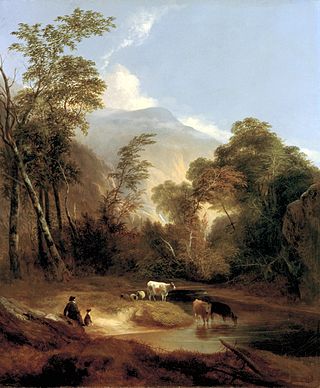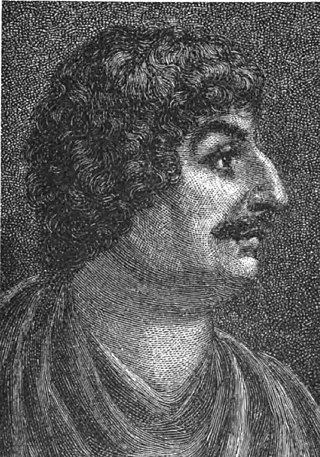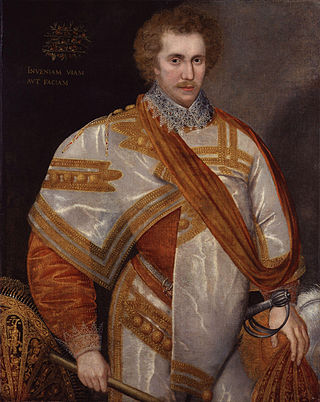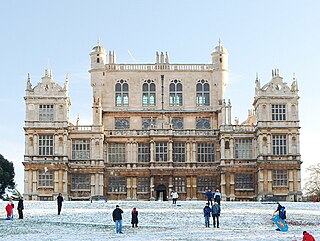Related Research Articles

Benjamin Jonson was an English playwright and poet. Jonson's artistry exerted a lasting influence on English poetry and stage comedy. He popularised the comedy of humours; he is best known for the satirical plays Every Man in His Humour (1598), Volpone, or The Fox, The Alchemist (1610) and Bartholomew Fair (1614) and for his lyric and epigrammatic poetry. He is regarded as "the second most important English dramatist, after William Shakespeare, during the reign of James I."

Andrew Marvell was an English metaphysical poet, satirist and politician who sat in the House of Commons at various times between 1659 and 1678. During the Commonwealth period he was a colleague and friend of John Milton. His poems range from the love-song "To His Coy Mistress", to evocations of an aristocratic country house and garden in "Upon Appleton House" and "The Garden", the political address "An Horatian Ode upon Cromwell's Return from Ireland", and the later personal and political satires "Flecknoe" and "The Character of Holland".

Modern lyric poetry is a formal type of poetry which expresses personal emotions or feelings, typically spoken in the first person. The term for both modern lyric poetry and modern song lyrics derives from a form of Ancient Greek literature, the Greek lyric, which was defined by its musical accompaniment, usually on an instrument known as a kithara, a seven-stringed lyre. These three are not equivalent, though song lyrics are often in the lyric mode and Ancient Greek lyric poetry was principally chanted verse.

The cavalier poets was a school of English poets of the 17th century, that came from the classes that supported King Charles I during the English Civil War (1642–1651). Charles, a connoisseur of the fine arts, supported poets who created the art he craved. These poets in turn grouped themselves with the King and his service, thus becoming cavalier poets.

This article focuses on poetry from the United Kingdom written in the English language. The article does not cover poetry from other countries where the English language is spoken, including the Republic of Ireland after December 1922.

The pastoral genre of literature, art, or music depicts an idealised form of the shepherd's lifestyle – herding livestock around open areas of land according to the seasons and the changing availability of water and pasture. The target audience is typically an urban one. A pastoral is a work of this genre. A piece of music in the genre is usually referred to as a pastorale.

Robert Herrick was a 17th-century English lyric poet and Anglican cleric. He is best known for Hesperides, a book of poems. This includes the carpe diem poem "To the Virgins, to Make Much of Time", with the first line "Gather ye rosebuds while ye may".
British literature is from the United Kingdom of Great Britain and Northern Ireland, the Isle of Man, and the Channel Islands. This article covers British literature in the English language. Anglo-Saxon literature is included, and there is some discussion of Latin and Anglo-Norman literature, where literature in these languages relate to the early development of the English language and literature. There is also some brief discussion of major figures who wrote in Scots, but the main discussion is in the various Scottish literature articles.

Robert Sidney, 1st Earl of Leicester, was an English courtier, soldier, and landowner. He was chamberlain to Anne of Denmark.

Flyting or fliting, is a contest consisting of the exchange of insults between two parties, often conducted in verse.

Emilia Lanier was the first woman in England to assert herself as a professional poet, through her volume Salve Deus Rex Judaeorum. Attempts have been made to equate her with Shakespeare's "Dark Lady".

Lady Mary Wroth was an English noblewoman and a poet of the English Renaissance. A member of a distinguished literary family, Lady Wroth was among the first female English writers to have achieved an enduring reputation. Mary Wroth was niece to Mary Herbert née Sidney, and to Sir Philip Sidney, a famous Elizabethan poet-courtier.

Elizabethan literature refers to bodies of work produced during the reign of Queen Elizabeth I (1558–1603), and is one of the most splendid ages of English literature. In addition to drama and the theatre, it saw a flowering of poetry, with new forms like the sonnet, the Spenserian stanza, and dramatic blank verse, as well as prose, including historical chronicles, pamphlets, and the first English novels. Major writers include William Shakespeare, Edmund Spenser, Christopher Marlowe, Richard Hooker, Ben Jonson, Philip Sidney and Thomas Kyd.
"Upon Appleton House" is a poem written by Andrew Marvell for Thomas Fairfax, 3rd Lord Fairfax of Cameron. It was written in 1651, when Marvell was working as a tutor for Fairfax's daughter, Mary. An example of a country house poem, "Upon Appleton House" describes Fairfax's Nunappleton estate while also reflecting upon the political and religious concerns of the time.
"The Garden" is a widely anthologized poem by the seventeenth-century English poet, Andrew Marvell. The poem was first published posthumously in Miscellaneous Poems (1681). “The Garden” is one of several poems by Marvell to feature gardens, including his “Nymph Complaining for the Death her Fawn,” “The Mower Against Gardens,” and “Upon Appleton House.”

Elizabeth Egerton, Countess of Bridgewater was an English writer who married into the Egerton family.
Constance Aston Fowler was a 17th-century English manuscript author and anthologist. Born "Constance Aston" about 1621, she was the youngest child of Walter Aston, 1st Lord Aston of Forfar and Gertrude Sadleir, who were a Catholic family. Her home was The Priory at St Thomas, near the family home of Tixal Hall in Staffordshire.
Salve Deus Rex Judaeorum is a volume of poems by English poet Emilia Lanier published in 1611. It was the first book of original poetry published by a woman in England. It was also the first book of poetry written by an English woman in an effort to attract a patron. The volume contains several short poems, each dedicated to a different woman, a long title poem Salve Deus Rex Judaeorum and the first English country house poem entitled "The Description of Cooke-ham".

Prodigy houses are large and showy English country houses built by courtiers and other wealthy families, either "noble palaces of an awesome scale" or "proud, ambitious heaps" according to taste. The prodigy houses stretch over the periods of Tudor, Elizabethan, and Jacobean architecture, though the term may be restricted to a core period of roughly 1570 to 1620. Many of the grandest were built with a view to housing Elizabeth I and her large retinue as they made their annual royal progress around her realm. Many are therefore close to major roads, often in the English Midlands.
References
- ↑ Text from the Poetry Foundation, penultimate line
- ↑ Hutchins, Zach. "The Fig Tree of Epiphanius in Jonson's 'To Penshurst.'" ANQ 23.1 (2010): 15-19.
- ↑ Pohl N. "Early Renaissance Country House Poetry" in A New Companion to English Renaissance Literature and Culture (Hattaway M, ed.), pp. 368–370 (John Wiley; 2010) ( ISBN 978-1405187626)
- ↑ Text